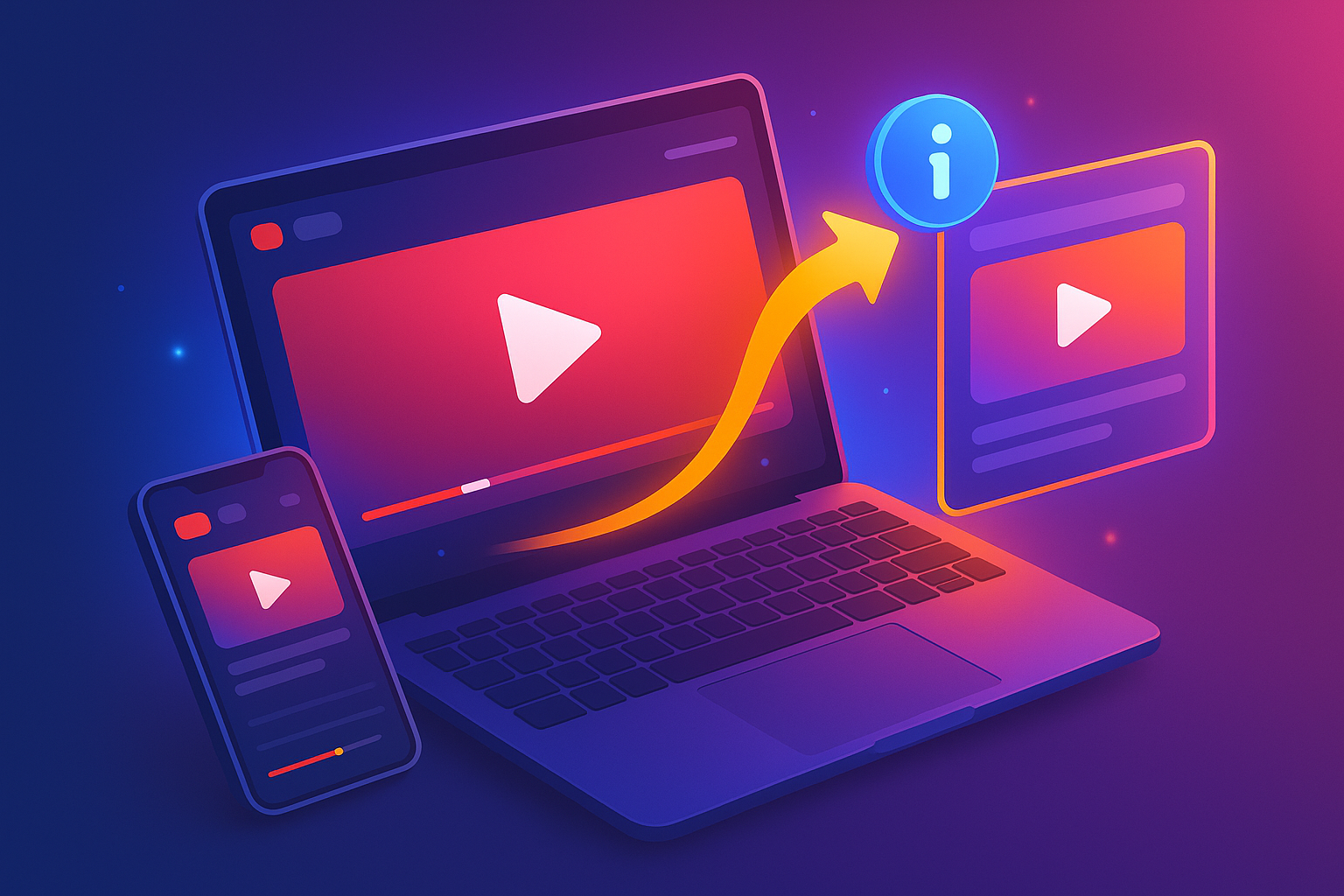Blog
Direction Ancillary Indication on YouTube

Direction Ancillary Indication on YouTube: Enhancing Your Video Experience
Have you ever noticed how some YouTube videos guide you seamlessly from one clip to another, or how certain hints make watching more engaging? These are what we might call “direction ancillary indications”—the subtle tools and cues that shape your journey on YouTube. Whether you’re a content creator looking to grow your audience or a viewer curious about the platform’s magic, this article will explore how these indications work, why they matter, and how they can transform your experience. Dive in to uncover the secrets behind YouTube’s navigation!
What Are Direction Ancillary Indications on YouTube?
At its core, the term “direction ancillary indication” could refer to the additional guidance YouTube provides beyond the main video content. Think of elements like end screens, info cards, video descriptions, or even timestamps that steer you toward related content. But what makes these indications so powerful? They act as bridges, connecting viewers to more of what interests them while giving creators a way to keep their audience engaged.
Reflect: Have you ever clicked on a suggested video at the end of a clip? What drew you to make that choice?
These tools are not just random additions—they’re designed to enhance directionality, offering a path through the vast sea of content. For creators, they’re a way to signal what’s next, while for viewers, they add context and convenience.
Try this: Next time you watch a video, pay attention to the cards or end screen. How do they influence your decision to stay or explore more?
The Role of Ancillary Indications in User Engagement
Ancillary indications play a key role in keeping viewers hooked. For instance, a well-placed card can introduce a related topic, while an end screen might encourage you to watch another video or subscribe. But why does this matter? Engagement is the lifeblood of YouTube—videos with higher watch time and interaction rank better in search results.
Consider this: A video with clear timestamps in the description allows you to jump to your favorite part. How might this change the way you experience long tutorials or vlogs? These small cues can turn a passive viewer into an active explorer, deepening their connection to the channel.
Question: Can you think of a time when a hint or suggestion on YouTube led you to discover something new? What was it about that cue that caught your attention?
Types of Direction Ancillary Indications
Let’s break down the main types of ancillary indications you might encounter:
- End Screens: These appear in the last 5-20 seconds, suggesting other videos or playlists.
- Info Cards: Pop-up boxes that link to related videos, playlists, or external sites.
- Video Descriptions: Text below the video, often with timestamps or links to guide you further.
- Thumbnails and Titles: Visual and textual hints that direct you to click in the first place.
Each type serves a purpose. For example, end screens can boost retention, while timestamps in descriptions cater to viewers seeking specific information. But how do these elements work together to create a smooth experience?
Exercise: Watch a popular YouTube video today. Identify at least two ancillary indications. How do they enhance or distract from your viewing?
How Creators Use Ancillary Indications to Grow
For content creators, ancillary indications are strategic tools. A creator might use an end screen to promote a new series, ensuring viewers don’t leave after one video. Info cards can highlight a product or tutorial, driving traffic within the channel. But what makes these effective? Timing and relevance are key—placing a card at the right moment can keep viewers watching longer.
Consider a cooking channel: A card suggesting a recipe video during a technique demo could keep the audience engaged. How might this approach differ for a gaming channel or a travel vlog?
Reflect: If you were a creator, which type of ancillary indication would you prioritize? Why might that choice suit your content?
The Impact on Viewer Experience
From a viewer’s perspective, ancillary indications can be a double-edged sword. They enhance discovery—imagine finding a hidden gem through a suggested video—but they can also overwhelm if overused. A video with too many pop-ups might frustrate you, while a well-crafted end screen could feel like a natural next step.
How do you feel when a video ends and suggests something new? Does it add value, or does it pull you away from what you intended to watch? Your experience shapes how these tools are perceived.
Consider this: Have you ever skipped a video because the indications felt intrusive? What might creators do to avoid that?
Comparing Ancillary Indications Across Platforms
YouTube isn’t the only platform with directional cues. On Vimeo, annotations might guide you to a filmmaker’s portfolio, while TikTok uses a “For You” page to suggest content. How does YouTube’s approach differ? Its emphasis on end screens and cards is unique, tailored to long-form content and creator monetization.
This comparison raises an interesting question: What can YouTube learn from other platforms to improve its ancillary indications? Perhaps a more personalized suggestion system could emerge.
Try this: Explore a video on another platform like TikTok or Vimeo. How do their directional cues compare to YouTube’s? What works better for you?
Common Pitfalls to Avoid
Even with the best intentions, ancillary indications can backfire:
- Overloading: Too many cards or end screens can clutter the screen.
- Irrelevance: Suggesting unrelated content can annoy viewers.
- Poor Timing: A pop-up during a key moment might disrupt the flow.
Quick check: Think of a video you’ve watched recently. Did any ancillary indications feel out of place? How might they have been improved?
Practical Tips for Leveraging Ancillary Indications
If you’re a creator or viewer looking to make the most of these tools, consider these ideas:
- Plan your cues: Map out where cards or end screens fit naturally in your video.
- Keep it relevant: Link to content that adds value to the current topic.
- Test and adjust: Experiment with placement and monitor viewer response.
- Use descriptions wisely: Add timestamps or links to guide viewers efficiently.
Challenge: Pick a video you enjoy and suggest one improvement to its ancillary indications. How might that change your experience?
Frequently Asked Questions (FAQ)
What are ancillary indications on YouTube?
Ancillary indications are tools like end screens, info cards, and video descriptions that guide viewers to related content or actions.
How do end screens help creators?
End screens boost retention by suggesting other videos or encouraging subscriptions in the final moments of a video.
Can I disable info cards?
Yes, YouTube allows you to turn off annotations and cards in the settings to reduce distractions.
Why are timestamps useful?
Timestamps in descriptions let viewers jump to specific parts, improving accessibility and engagement.
How often should I use ancillary indications?
Moderation is key—use them sparingly to avoid overwhelming viewers, focusing on natural integration.
Do ancillary indications affect YouTube rankings?
Yes, they can improve watch time and click-through rates, which influence how YouTube prioritizes your video.
Conclusion: Navigating YouTube with Confidence
Direction ancillary indications are more than just features—they’re the threads that weave a richer YouTube experience. For creators, they offer a path to growth; for viewers, they open doors to new discoveries. By understanding how to use or interact with these cues, you can navigate the platform with greater confidence and enjoyment. Whether you’re crafting your next video or exploring a new channel, these tools are your guide.
Take action: Share your favorite YouTube trick or experience with ancillary indications in the comments below! Have you found a video that uses them brilliantly? Let’s keep the conversation going!








